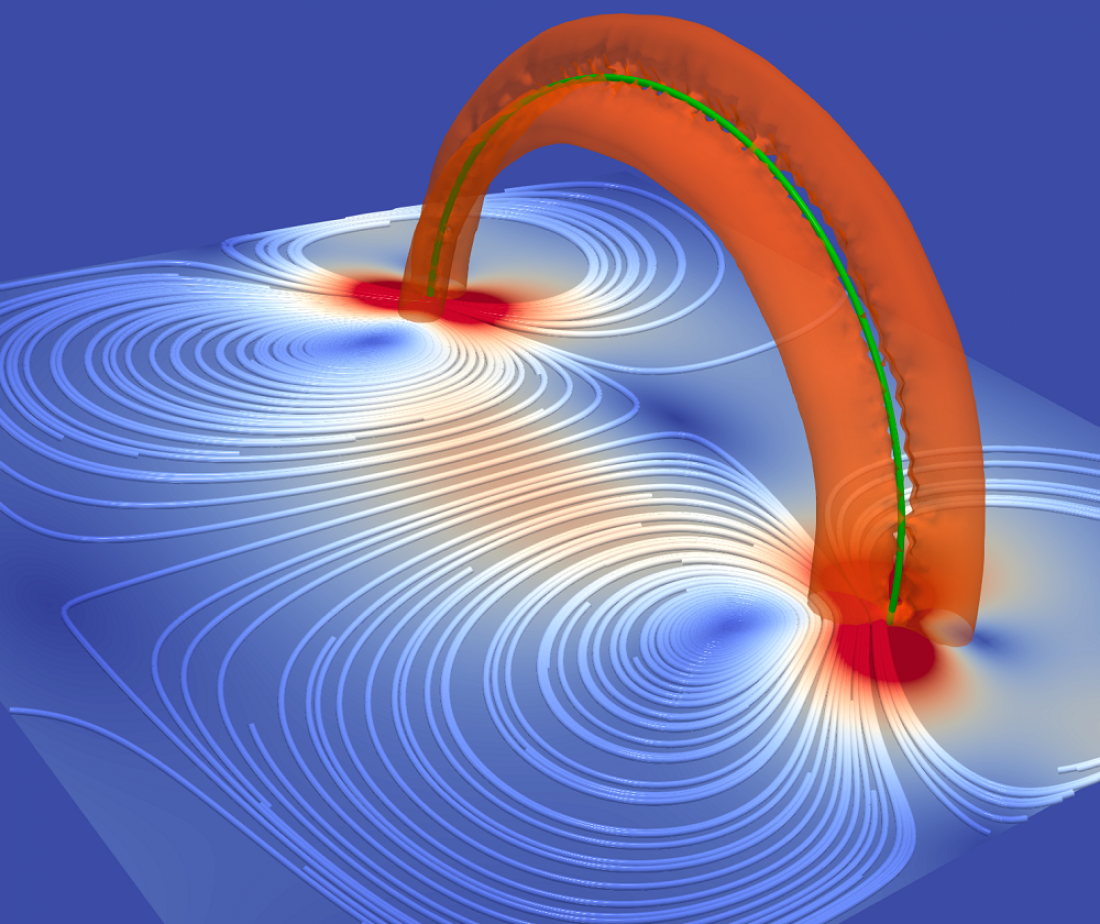The interaction between quantized vortices and normal fluids explained. Visualization of quantized vortex ring above the plane (green curve), normal-fluid vortex rings (reddish half circles)
Liquid helium-4, which is in a superfluid state at cryogenic temperatures close to absolute zero (-273°C), has a special vortex called a quantized vortex that originates from quantum mechanical effects. When the temperature is relatively high, the normal fluid exists simultaneously in the superfluid helium, and when the quantized vortex is in motion, mutual friction occurs between it and the normal-fluid. However, it is difficult to explain precisely how a quantized vortex interacts with a normal-fluid in motion. Although several theoretical models have been proposed, it has not been clear which model is correct.
A research group led by Professor Makoto Tsubota and Specially Appointed Assistant Professor Satoshi Yui, from the Graduate School of Science and the Nambu Yoichiro Institute of Theoretical and Experimental Physics, Osaka Metropolitan University respectively in cooperation with their colleagues from Florida State University and Keio University, investigated numerically the interaction between a quantized vortex and a normal-fluid. Based on the experimental results, researchers decided on the most consistent of several theoretical models. They found that a model that accounts for changes in the normal-fluid and incorporates more theoretically accurate mutual friction is the most compatible with the experimental results.
“The subject of this study, the interaction between a quantized vortex and a normal-fluid, has been a great mystery since I began my research in this field 40 years ago,” stated Professor Tsubota. “Computational advances have made it possible to handle this problem, and the brilliant visualization experiment by our collaborators at Florida State University has led to a breakthrough. As is often the case in science, subsequent developments in technology have made it possible to elucidate, and this study is a good example of this.”
Their findings were published in Nature Communications.
###
About OMU
Osaka Metropolitan University is the third largest public university in Japan, formed by a merger between Osaka City University and Osaka Prefecture University in 2022. OMU upholds "Convergence of Knowledge" through 11 undergraduate schools, a college, and 15 graduate schools. For more research news visit https://www.omu.ac.jp/en/ or follow us on Twitter: @OsakaMetUniv_en, or Facebook.



